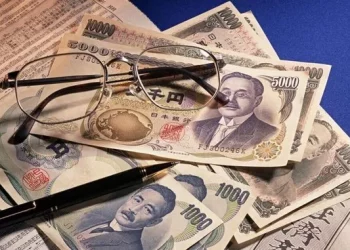The Australian dollar (AUD) is one of the most well-known currencies globally and is used not only in Australia but also in several countries and territories around the world. As the national currency of Australia, it holds significant value within the Asia-Pacific region and beyond. Understanding where the Australian dollar is accepted can benefit travelers, businesses, and investors who interact with countries that use or accept this currency. This article explores the various countries and regions where the Australian dollar is accepted and discusses the factors that contribute to its usage outside Australia.
The Role of the Australian Dollar
Before delving into the countries that accept the Australian dollar, it’s important to understand its role in the global economy. The Australian dollar is considered one of the major currencies in the world, alongside the US dollar (USD), the euro (EUR), the British pound (GBP), and others. It is one of the most traded currencies globally, ranking in the top five most traded currencies in the foreign exchange (Forex) market. The currency is known for its relative stability, supported by the strength of the Australian economy and its active participation in international trade.
Australia is a major exporter of commodities, including natural resources such as iron ore, coal, and natural gas. These exports contribute to the strength of the Australian dollar, making it attractive for trading and use in other countries. The currency’s status as a commodity-driven currency means that it is often in demand, particularly in regions that rely on Australian exports.
The Australian dollar is also tied to the economic relationship between Australia and other countries, such as trade agreements, investment flows, and regional economic ties. These factors influence the use of the Australian dollar beyond Australia’s borders.
Countries and Regions That Accept the Australian Dollar
While the Australian dollar is not as widely used globally as the US dollar or the euro, it is still accepted in a number of countries and territories, particularly in the Asia-Pacific region. Below is a breakdown of where the Australian dollar is accepted, both as an official currency and as an unofficial or secondary currency.
1. Australia and Its Territories
It’s obvious, but worth noting first, that the Australian dollar is the official currency of Australia. It is used throughout the country in all transactions, including retail, business, and government operations. The Australian dollar is issued by the Reserve Bank of Australia and is divided into 100 cents.
In addition to Australia, the Australian dollar is also the official currency in several Australian territories and dependencies:
- Christmas Island
- Cocos (Keeling) Islands
- Norfolk Island
In these territories, the Australian dollar is used just as it is in mainland Australia, and transactions are made in AUD.
2. Pacific Island Nations
The Australian dollar is widely accepted in various Pacific Island nations, largely due to historical ties, economic relations, and the proximity of these nations to Australia. Some of the countries and territories where the Australian dollar is either the official currency or is accepted alongside the local currency include:
Kiribati: The Australian dollar is commonly accepted here, especially in larger towns and businesses.
Nauru: While the official currency is the Australian dollar, local businesses and markets often price items in AUD.
Tuvalu: Australian dollars circulate alongside the local currency, the Australian dollar being more commonly used in everyday transactions.
The use of the Australian dollar in these nations is largely driven by the practical need for a stable and reliable currency, which the AUD provides. In some cases, these countries have no central bank of their own, and relying on the Australian dollar provides economic stability and integration with the global financial system.
3. East Timor (Timor-Leste)
East Timor, or Timor-Leste, is a Southeast Asian country that has adopted the Australian dollar as its official currency. After gaining independence from Indonesia in 2002, the country opted to use the Australian dollar as a way to stabilize its economy and promote growth. The Australian dollar has remained the official currency of East Timor due to the country’s lack of a national currency and its strong economic and trade relations with Australia.
4. The British Indian Ocean Territory
The British Indian Ocean Territory (BIOT) is another region where the Australian dollar is accepted. Although the currency used in the BIOT is typically the US dollar, the Australian dollar is also accepted due to the close relationship between Australia and the BIOT, especially because of the Australian military presence on the territory.
5. Other Countries That Accept the Australian Dollar
In addition to the above regions, there are a number of countries where the Australian dollar is accepted informally or on a limited basis. These include countries that have strong trade ties with Australia, tourist destinations with a large number of Australian visitors, or regions where currency exchanges between AUD and the local currency are common.
Some of these countries are:
New Zealand: While the New Zealand dollar (NZD) is the official currency of New Zealand, the Australian dollar is often accepted in some tourist areas, particularly in cities and regions near the Australian border. Many New Zealanders also hold Australian dollars for cross-border transactions and travel.
Indonesia: In tourist-heavy areas like Bali, the Australian dollar is widely accepted in restaurants, hotels, and shops, catering to the large influx of Australian tourists. While the official currency of Indonesia is the Indonesian rupiah (IDR), AUD is often seen as an alternative currency in these regions.
Thailand: Similar to Indonesia, tourist destinations in Thailand, such as Bangkok and Phuket, often accept the Australian dollar. However, the Thai baht (THB) is the official currency.
Fiji: Like other Pacific nations, Fiji sees a high level of tourism from Australia, and businesses in areas with high foot traffic from Australians may accept AUD. However, the Fijian dollar (FJD) remains the official currency.
6. Currency Exchange Facilities for the Australian Dollar
In countries where the Australian dollar is not accepted as an official or secondary currency, it is still commonly traded at currency exchange facilities. Many exchange offices in major cities, especially those with strong tourism industries or international business hubs, will deal in Australian dollars. In these places, you can exchange AUD for the local currency or vice versa.
Popular tourist destinations in Europe, Asia, and North America often provide currency exchange services for Australian dollars. This is convenient for travelers who wish to avoid converting their money into other currencies before reaching their destination.
Why Do Some Countries Accept the Australian Dollar?
Several factors contribute to the decision of certain countries and territories to accept the Australian dollar. The following are the key reasons why this occurs:
Economic Ties and Trade Relationships: Australia has extensive trade relations with a number of countries, particularly those in the Asia-Pacific region. These economic links often lead to the acceptance of the Australian dollar as a stable and reliable alternative currency.
Tourism: Countries that attract a significant number of Australian tourists, such as Indonesia, Thailand, Fiji, and New Zealand, may accept Australian dollars to accommodate travelers who prefer to spend their home currency.
Stability: The Australian dollar is seen as a stable and safe currency, backed by a strong economy and sound fiscal policies. This makes it an attractive currency for use in countries that either do not have a local currency or prefer to adopt an internationally recognized currency.
Geographical Proximity: Many Pacific Island nations are geographically close to Australia, which makes it economically practical for them to use the Australian dollar. These nations may not have the infrastructure to support their own currencies, making the AUD a logical choice.
Historical Relationships: In some cases, historical ties, particularly those linked to Australia’s colonial past or shared governance arrangements, have led to the acceptance of the Australian dollar. This is particularly true for regions that have been part of the British Empire or are associated with British territories.
Conclusion
The Australian dollar is not just the currency of Australia; it is also accepted in a number of countries and territories around the world. Whether as the official currency, a secondary currency, or informally accepted in certain areas, the Australian dollar plays an important role in the economies of several nations, particularly in the Asia-Pacific region.
From the Pacific Island nations and East Timor to popular tourist destinations like Indonesia and Thailand, the widespread acceptance of the Australian dollar highlights the currency’s importance and its global reach. For businesses, travelers, and investors, understanding where the Australian dollar is accepted can help in planning financial strategies, managing currency risks, and navigating international trade. While it may not have the same level of global dominance as the US dollar or euro, the Australian dollar is undoubtedly a significant player in the world’s financial markets.
Related Topics:



























